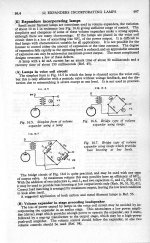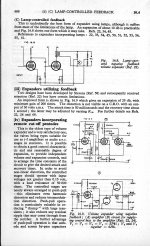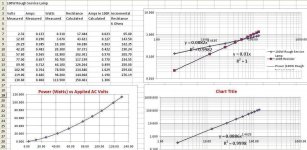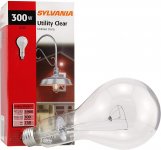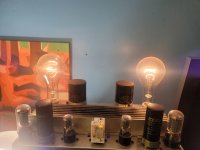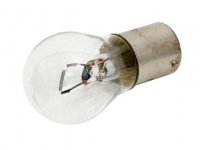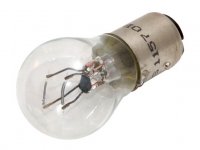Not sure that Europe was bombed flat ...
Not sure how old you are, but even in the 50's, you see films with gaping holes in London, and Berlin is practically empty still in the centre.
London bombs
The 1157 was a very common automotive bulb used till about yr 2000. It has two filaments, a low power used as a running light & a higher power for the brake light.
The attached compares the high power filament to a 5R resister. On a log-log scale resisters appear as a straight line with a slope of one. The 1157 shews up here with a slope of less than 0.5, typical of tungsten bulbs. the R2 value is a measure of how well the resulting curve fits a power series. Better fits result using quadratic or cubic equations, but in this case doesn't mean much.
Bill Hewlett of HP found a very useful application for this property of tungsten light bulbs. It stabilizes the output level of Wien Bridge Audio Oscillators better than other techniques in use at that time (1938). The first large sale of HP was to Walt Disney Studios who bought six HP 200A Audio Oscillators.🙂
The other info is lifted from RDH4, light bulbs in audio circuits.
The attached compares the high power filament to a 5R resister. On a log-log scale resisters appear as a straight line with a slope of one. The 1157 shews up here with a slope of less than 0.5, typical of tungsten bulbs. the R2 value is a measure of how well the resulting curve fits a power series. Better fits result using quadratic or cubic equations, but in this case doesn't mean much.
Bill Hewlett of HP found a very useful application for this property of tungsten light bulbs. It stabilizes the output level of Wien Bridge Audio Oscillators better than other techniques in use at that time (1938). The first large sale of HP was to Walt Disney Studios who bought six HP 200A Audio Oscillators.🙂
The other info is lifted from RDH4, light bulbs in audio circuits.
Attachments
I'm afraid only a light bulb specified for mains voltage can be used in this application (short circuit protection and detection). Also the nominal current of the light bulb should be an order of magnitude higher than the DUT. Perhaps several light bulbs could be parallel connected, like 2x or 4x 75W.
With a 50 Watt 230V light bulb in series you can connect any normal load. I connected a 2000 Watt heater for testing. The only thing that happened when I switched the heater on, was that the light bulb was shining very bright. In fact if you create a short instead of the load, the bulb will get full mains voltage.
Of course with the test with the bulb in series the heater didn’t work properly. So if you intend to get a heavier load working, then a higher wattage (more light bulbs parallel) will be needed.
Regards, Gerrit
Of course with the test with the bulb in series the heater didn’t work properly. So if you intend to get a heavier load working, then a higher wattage (more light bulbs parallel) will be needed.
Regards, Gerrit
He is correct , at least 100W bulb is needed , otherwise every load will light the bulb too much to tell if there is a genuine short/overcurrent problem.
This a well known method of testing usually power supplies ( SMPS ) , so you don't blow the transistors if you change them but there are still other issues .
This a well known method of testing usually power supplies ( SMPS ) , so you don't blow the transistors if you change them but there are still other issues .
Last edited:
The 1157 was a very common automotive bulb used till about yr 2000. It has two filaments, a low power used as a running light & a higher power for the brake light.
The attached compares the high power filament to a 5R resister. On a log-log scale resisters appear as a straight line with a slope of one. The 1157 shews up here with a slope of less than 0.5, typical of tungsten bulbs. the R2 value is a measure of how well the resulting curve fits a power series. Better fits result using quadratic or cubic equations, but in this case doesn't mean much.
Bill Hewlett of HP found a very useful application for this property of tungsten light bulbs. It stabilizes the output level of Wien Bridge Audio Oscillators better than other techniques in use at that time (1938). The first large sale of HP was to Walt Disney Studios who bought six HP 200A Audio Oscillators.🙂
The other info is lifted from RDH4, light bulbs in audio circuits.
Maybe it's different countries terminology, but that sounds like a standard stop and tail light, which I've always known as a 380 bulb.
And I spent half my life selling them.
The 1157 was common in the Americas. Read Ford, GM & Chrysler. There is a more recent version with a different connexion. Stiff wires backed up by plastic, the 3057, And it is a standard stop & tail light. Perhaps it is compatible with the 380 family.🙂
I never sold incandescents but rather LEDs by the million while with HP!😀
I never sold incandescents but rather LEDs by the million while with HP!😀
My MOSFET amp is loaded by bulbs, too.
~350W from the wall pour le pissoir de puissance (not a lot of power)...
I'm going to use it as a heater tonight.
~350W from the wall pour le pissoir de puissance (not a lot of power)...
I'm going to use it as a heater tonight.
Attachments
Last edited:
The 1157 was common in the Americas. Read Ford, GM & Chrysler.....
All my life I have kept a drawer of 1156 1157 lamps. I can't believe anybody would doubt that.
1980 All Makes All Models Parts | *XX102 | 1980 Emergency Bulb Kit -
And yet, NONE of the cars in this house: 1991, 1996, 2002, use the 1156/1157 types. Which explains why I have not re-stocked that drawer in years.
1156 is one filament. 1157 is two filaments, two back blobs, and only goes in one way. (Oh, you CAN get it in the other way, but it works wrong, and getting it out is a pain.)
No, these don't work on 120V, but are dandy for hot-wiring car accessories. A transistor car radio will light and may whisper on the fat side of a 1157; if the radio is a short you just have a bright lamp, not a pfft-fuse or a wire-fire. They are also dummy loads for 12V power supplies. (Switchers may not like the cold-load.)
Attachments
Last edited:
The 1157 was common in the Americas. Read Ford, GM & Chrysler. There is a more recent version with a different connexion. Stiff wires backed up by plastic, the 3057, And it is a standard stop & tail light. Perhaps it is compatible with the 380 family.🙂
I never sold incandescents but rather LEDs by the million while with HP!😀
Having looked it up, it seems it's the same bulb, just different numbering systems.
The 1156 mentioned is a 382 in the UK.
The 2057 is even higher wattage apparently: 2057 Sylvania Long Life Mini Bulbs Canadian Tire
My car uses 7506 Sylvania Long Life Mini Bulbs Canadian Tire instead of 1156
My car uses 7506 Sylvania Long Life Mini Bulbs Canadian Tire instead of 1156
My Y chromosome, 9 generations back, is Dutch. He was in New Amsterdam in 1634. Does this give me a European culture? I'd say no, but American culture when I was a child, and still today, is a strongly European culture. Here we struggle with balancing the good parts of European culture with the bad parts of slavery in the Americas, and conveniently confuse the two. We reframe the discussion in every other possible way, but that's always the underlying issue. Slavery is not a European issue, but an American one. Here it's so deeply shameful that it cannot even be thought about.
I know myself to be the descendant of both slaves and slave-holders, but if we were to look far enough back, this would be true for all of us. We're all descended from a population bottleneck about 200,000 years ago, when we all had a common ancestral grandmother and a common ancestral grandfather. A lot of good and a lot of bad things happen in 10,000 generations, and we are the surviving results. All our cousin species are dead, and only traces of our Neanderthal and Denisovan cousins remain, within us.
But "recently", meaning in a human lifetime, yeah, Europe got bombed flat in the war, as did East Asia, as did Russia. Only America survived the war semi-intact. Europe had to start fresh, without a lot of pre-war baggage, and is today way more than an American colony - it's the most viable "near-long-term" model for the future of civilization. Keep your "Eyes on the Prize".
All good fortune,
Chris
Thanks for this honest and straightforward post.
I heard that men use base 11 and women use base 12. That was until puritanical decency laws stopped this and base 10 was used.
The US uses month, day, year because in a date like 01/20/70 there is only one 01 or January and there are 12 20th days, one for each month. Thus, starting with month gets you closer to the date than starting with the day as there are one of that day for each month. That is what I learned in school but herein the US they lie to the students. That is a different story!
We use Day, as it is useful, Month as it gives us an idea on what the weather might be and Year to check how old we are.
Seriously though, we use that configuration because that is how it is. GMT for time and the Gregorian calender is notated by day then month and finally year.
Why some countries use the numbers the wrong way is, I suppose, their choice ... but confusing.
Seriously though, we use that configuration because that is how it is. GMT for time and the Gregorian calender is notated by day then month and finally year.
Why some countries use the numbers the wrong way is, I suppose, their choice ... but confusing.
- Home
- Amplifiers
- Tubes / Valves
- Light bulb in series with load for testing

